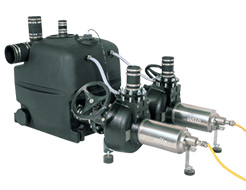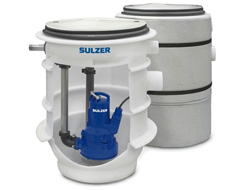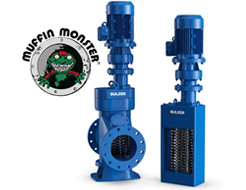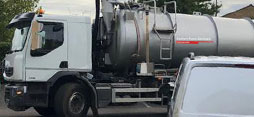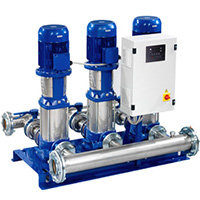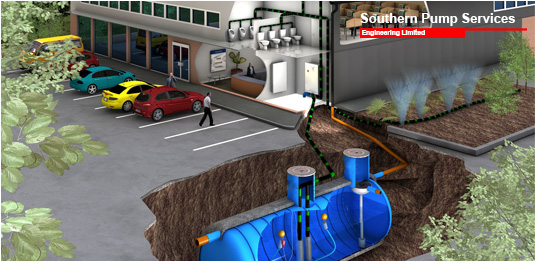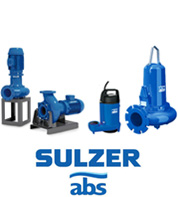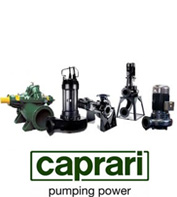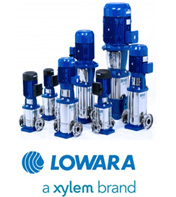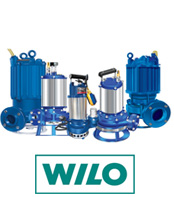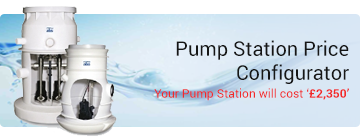What is Rainwater Havesting ?
- Rainwater harvesting is the collection, filtering, storage and use of rainwater. This water is used to replace mains water in non-potable applications, such as toilets, urinals, washing machines, irrigation systems, vehicle washing, sprinkler systems and any other uses where the water is not used for human consumption.
Why harvest rainwater?
- Rising utility bills, reduction of running costs and environmental implications are just three reasons for investing in a rainwater harvesting system. 50% of domestic and up to 85% of non-domestic mains water can be replaced in this way.
- Rainwater harvesting is a key component to reach compliance within the Code for Sustainable Homes to reduce overall water consumption.
- Additionally, rainwater re-use scores high accreditation in the Water Efficiency sector of the BREEAM schemes and can help with gaining planning permission by meeting site drainage requirements (ref Building Regulations Part H) as part of a sustainable drainage (SuDS) scheme.
What types of system are available?
- There are three basic types of rainwater harvesting system available:
Gravity (non-pressurised):
- Collected rainwater is pumped from the main holding tank to an elevated header / break tank. The connected appliances are then supplied from the header / break tank as in a normal Gravity fed system.
Direct (pressurised):
- Collected rainwater is pump fed direct from the main holding tank to the serviced appliances.
Combination:
- Collected rainwater is pump or gravity fed to a low level break tank. In turn, the water is then gravity fed to an integral or external booster pump system for onward distribution to the serviced appliances.
These three systems are subject to variations such as internal or external locations for main storage tanks, communal tanks for multiple properties, above or below ground storage tanks, etc. The SPSE water range comprises of all three system types and a wide variety of above and below ground specification tanks.
What are the design considerations to ensure compliance?
- The design of a rainwater harvesting system requires specific training due it’s complexity and technical content. When designing a reliable, efficient rainwater harvesting system, we have to take into account a wide range of criteria.
- The geographical location and it’s annual rainfall; the area and type of roof or collection surface; and the intended applications, now and in the future, are all considerations to ensure full compliance with BS 8515:2009.
- Additionally, the size and location (above or below ground) of the main storage tank is calculated using the formula within BS 8515:2009. Individual client requirements and site restrictions must be considered by the designer to provide a project specific ‘detailed approach’.
What is the purpose of BS 8515:2009?
- BS 8515:2009 sets standards for the design, installation, quality of water, maintenance, and risk management of rainwater harvesting systems for both new-build projects and retro-fitted systems.
- The standard covers the storage tank, whether located above or below ground. They must be watertight, avoid stagnation, resist microbial growth and be sited so as not to create an environment suitable for the growth of Legionella.
- Below ground installations should be suitable for the relevant traffic loadings and be flotation resistant. Above ground tanks should be insulated to prevent heating and freezing of the collected water.
- The design of system components and the use of waterbutts are not included.
Why are three different design approaches (‘simple’, ‘intermediate’ and ‘detailed’) suggested within BS 8515:2009?
- As buildings (and rainwater systems) get bigger and more complex, the level of detail involved in their design also increases. BS 8515 adopts a three-tier approach to ensure applicable variables are taken into account when calculating the capacity of the rainwater storage tank(s).
‘simplified approach’
- The tank-capacity for the majority of regular domestic applications can be safely estimated by using general storage sizing tables. These tables (contained within the Standard) equate roof area with annual average rainfall depth to determine a suitable tank capacity. In some instances the population of the house is also examined.
‘intermediate approach’
- The intermediate approach takes a similar approach to the simplified method, but introduces mathematical equations to help calculate the storage capacity for domestic use. The advantage of this method is that variables can be modified to reflect the situation being considered.
‘detailed approach’
- A detailed approach considers all design variables – flow rates, peak demands, yield and demand, filtration levels to ensure and sustain a clean, clear rainwater supply – for the optimum design of large or complex rainwater harvesting proposals. BS 8515:2009 does not necessarily cover all these criteria, but defines the minimum standards for rainwater harvesting systems.
Can system efficiency be affected by the collection surface and its drainage methods?
- The collection surface’s materials and drainage can significantly impact on the quality and quantity of harvested rainwater. A prime example is the use of a green roof as the absorption of water is high, which in turn results in less run-off in comparison to hard roof types. Additionally, consideration has to be given to the levels of pollution and other contaminants that may enter the system. Syphonic drainage systems are an effective method of maximising rainwater yield, but the system design has to take into account the higher flow rates. Roof outlets, guttering and pipework should be free-draining to avoid stagnation and contamination of the rainwater from other sources.
How is the collected rainwater filtered?
- BS 8515:2009 stipulates that a system must filter the rainwater before it “enters the main body of stored water” to prevent the accumulation of debris in the tank. The filter can be placed in the collection pipework prior to the tank or, integrated within the main storage tank itself.
- All filter systems are subject to stringent criteria: water and weather resistant, easily accessible for maintenance and have an efficiency of at least 90%. To prevent any other settled debris contaminating the system, the main storage tank should be fitted with a calmed inlet.
Is UV treatment necessary?
- The majority of non-potable water applications, such as toilet / urinal flushing and washing machines, do not require UV or chemical disinfection.
- However, BS 8515:2009 states that the inclusion of UV or chemical treatment might be beneficial in situations where there is potential for increased human exposure or for applications within public buildings.
Does the harvested rainwater need to be routinely tested?
- Frequent water sampling is not necessary although maintenance visits should include observation of water quality to ensure optimum system operation.
How is the collected rainwater prevented from entering the public mains water supply?
- BS 8515:2009 stipulates that the back-up supply should be fitted with a backflow prevention device capable of category 5 protection such as a Type AA air gap to BS EN 13076 or a Type AB air gap to BS EN 13077.
- The backflow prevention device should be fitted upstream of, or at the point of delivery where the two systems meet.
Does the storage tank require an overflow?
- An overflow facility should be fitted to all storage tanks and cisterns to allow the drainage of excess water during periods of heavy rainfall. The overflow should prevent any backflow and be secure against any vermin entering the system.
- Flow capacity of the overflow outlet pipe should be equal to, or greater than, the capacity of the inlet pipe.
- Best practice design will allow for overflow of the main tank at least twice a year to remove build up of floating sediment and maintain good quality stored water.
Why is a control unit necessary?
- Basically, the control unit makes the user aware if the system is functioning effectively or not. The unit controls the pump(s), automatically activates the back-up water supply and provides a voltfree outlet for linking to a building management system (BMS), where necessary.
- More advanced systems, have an additional warning system to monitor water volume use and identify any potential problems, e.g. pump failure.
What kind of pump should be used?
- Single or multiple pump systems can be used and should be equipped with dry-run protection. They can be installed inside or outside of the tank but, in either case, noise and energy use should be minimised.
- For pumps installed inside tanks, a minimum water level needs to be maintained above the pump inlet at all times to prevent damage from sucking in air, sediment or debris. There should be access for the removal of the pump for maintenance purposes and the pump should be equipped with a non-return valve.
- In ‘direct’ (pressurised) systems, surges, water hammer and hunting need to be absorbed and prevented from causing high pressures by the incorporation of expansion vessels. ‘Gravity’ (non-pressurised) systems automatically protect the pump and extend its life.
Is the pipework for rainwater different to mains water?
- All pipework used in the rainwater harvesting system should be in a contrasting colour, or material, to mains pipework and labelled in accordance with Annex C of BS 8515:2009. Pipework should not be blue, but green or black and green, and robust enough to withstand the pressure of the system and sized to provide the specified flow rates.
Who can install a rainwater harvesting system?
- Installation of the system should be in accordance with the manufacturer’s instructions and carried out by qualified personnel with regard to location and access to components for future maintenance and/or replacement.
Who can commission a rainwater harvesting system?
- Commissioning of the system can only be undertaken by qualified personnel authorised by the manufacturer. The system requires flushing and testing, prior to handover, to ensure water tightness of the pipework and containers.
- There should be no cross-connections in accordance with BS 6700 and the manufacturer’s instructions - running coloured dye through the system in conjunction with a visual check is acceptable.
- All pipework and fittings should be tested to and comply with BS 6700:2006, 6.1.12.3. Electrical wiring should be tested to BS 7671.
Does the system require regular maintenance?
- A maintenance schedule, as per the manufacturer’s recommendations, is the best and most cost-effective means to ensure reliability and effective operation of the system. Southern Pump Services Engineering offer a range of maintenance packages to suit all applications.
What steps are taken to ensure safety of the system?
- A risk assessment should be carried out following a recognised process, for example as described in BS 31100, at the design stage. The assessment should take into account the design, installation, testing, commissioning, operation and maintenance of the system and cover water quality, structural integrity, electrics and access.
- Additionally, the risk assessment should consider potential sources of contamination of water entering, or already in the system.
- The manufacturer’s and/or supplier’s reputation, experience, knowledge and compliance with BS 8515:2009 should also offer reassurance.
How is the collected rainwater filtered?
- BS 8515:2009 stipulates that a system must filter the rainwater before it
This guide has been published to provide a brief overview of the key points within BS 8515:2009. It should be read in conjunction with the Standard documentation, a copy of which is available via the British Standard website at www.bsi-global.com

